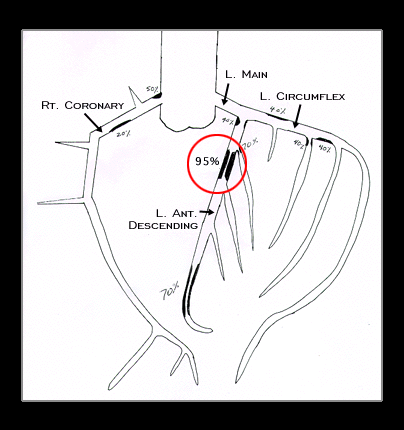
Her coronary angiogram, depicted here, demonstrated a 95% stenosis of the proximal left anterior descending coronary artery and a 70% stenosis in its distal portion. There were also lesser degrees of stenosis scattered throughout the right and circumflex coronary arteries.
